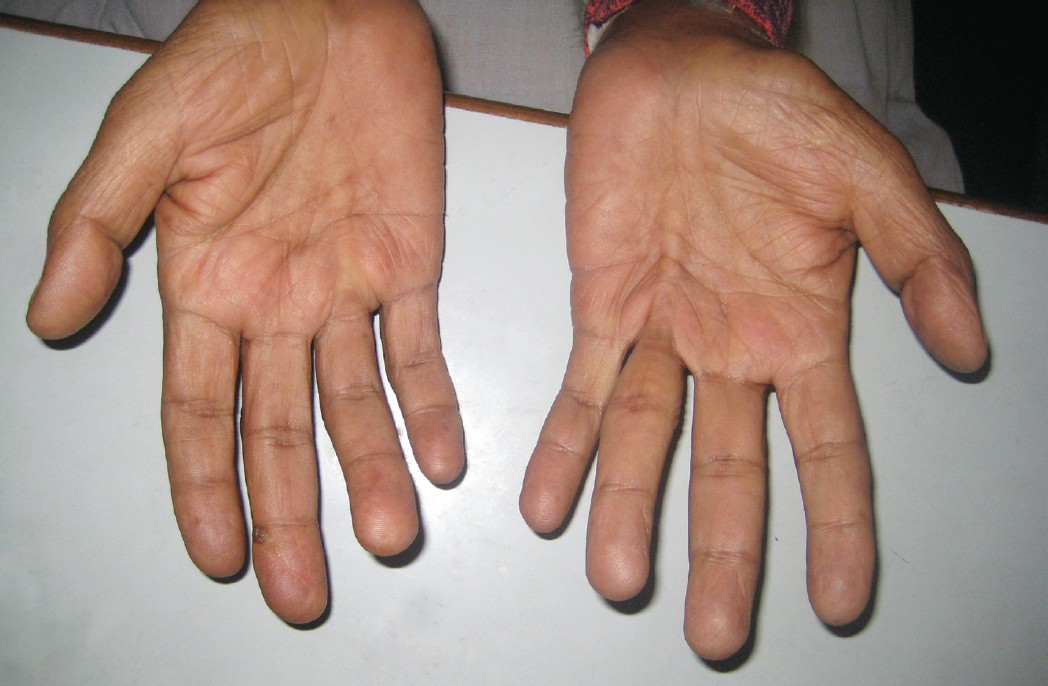Translate this page into:
Dupuytren's contracture
*For correspondence: B-1 Type IV Qts, Dr Rajendra Prasad Govt. Medical College, Tanda, Kangra (HP) 176 001, India sujeetrashmishera@yahoo.co.in
This is an open-access article distributed under the terms of the Creative Commons Attribution-Noncommercial-Share Alike 3.0 Unported, which permits unrestricted use, distribution, and reproduction in any medium, provided the original work is properly cited.
This article was originally published by Medknow Publications & Media Pvt Ltd and was migrated to Scientific Scholar after the change of Publisher.
A 50-year-old male farmer, obese, known diabetic for seven years with a history of poorly controlled diabetes mellitus was admitted in medicine ward of Dr Rajendra Prasad Govt. Medical College, Tanda, Kangra, Himachal Pradesh, India, for glycaemic control. The patient also disclosed history of chronic alcohol abuse of 20 years duration. He reported history of inability to straighten his both ring fingers, left more than right, which affected his farming for last five years. On examination microvascular complications of diabetes in the form of non proliferative retinopathy, large fiber neuropathy and microalbuminuria were present. Examination of hands revealed presence of flexion contracture involving ring finger of both the hands. Palmer fascia was thickened and had cord like feel. Based on examination the condition was diagnosed as Dupuytren's contracture (Fig.). It is a benign fibroproliferative disorder of the palmer and digital fascia, giving rise to the formation of nodules and cords leading to flexion contracture of metacorpophalangeal and proximal interphalangeal joints. Common risk factors for Dupuytren's contracture include a family history of the disorder, diabetes, alcohol consumption, epilepsy, HIV infection and the use of vibratory machinery. Disease is more frequent in males than in females. There is no cure for the disease. Standard treatment consists of fasciotomy, but other methods of treatment like laser therapy, collagenolytic fasciotomy and IFN (interferons) are also emerging. Steroids are helpful in reducing symptoms though these do not alter the natural course of the disease. The pathogenesis of Dupuytren's is still unknown.

- Dupuytren's contracture involving both hands.





